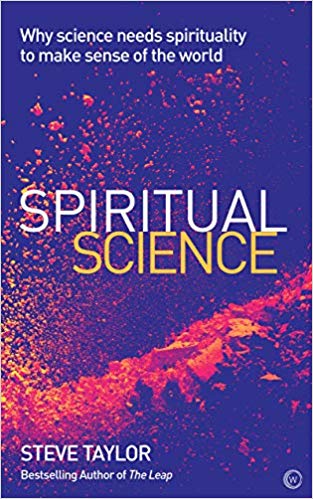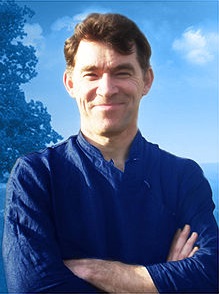Guest writer for Wake Up World
A near-death experience is when a person appears to be clinically “dead” for a short period — when the heart stops beating, the brain registers no sign of activity and other vital signs indicate death — and yet they report a continuation of consciousness. This may happen following a cardiac arrest, for example. For a few seconds or minutes, a person may show no biological signs of life, and yet when they are resuscitated, report that a series of unusual experiences.
Typically, near-death experiences begin with a feeling of separation from the body (or out-of-body experience), sometimes with a humming or whistling sound. Then there is usually a journey through a dark passage or tunnel towards a place of light. There is a feeling of serenity and intense well-being, a sense of calmness and wholeness, which is often so pleasant that some people are reluctant to return to their bodies, and even feel disappointed when they regain consciousness. Often people meet deceased relatives or beings of light. In a smaller proportion of cases, there is a “life review,” in which the significant events of a person’s life are replayed.
Throughout the experience, people feel that their senses have become heightened — everything they experience has a quality of intense realness. In contrast to hallucinations, NDEs feel much more real than our ordinary experience. There is often also a sense of being outside time. Even though a person may only be unconscious for a few seconds, they may undergo a complex succession of experiences that may appear to last for hours. There is also a sense of connectedness or unity. The sense of being a separate entity, enclosed within our own mental space, is replaced by a sense of being part of an interconnected network of being, of sharing identity with other people, or the world in general.
Near-death experiences are controversial because it is difficult to explain them in neurological terms. Many suggestions have been made — for example, that they are caused by cerebral anoxia, by undetected brain activity, or the release of “psychedelic chemicals” like DMT or ketamine in the brain when a person is close to death. From this point of view, NDEs are nothing more than brain-created hallucinations, no more real than dreams.
The After-Effects of NDEs
However, one of the most striking things about near-death experiences is their long-term effect. They frequently bring about a profound shift of values and perspective, which itself leads to major lifestyle changes. People often become less materialistic and more altruistic, less self-oriented and more compassionate. They often feel a new sense of purpose, and their relationships become more authentic and intimate. They report becoming more sensitive to beauty, and more appreciative of everyday things. One person who had an NDE after a heart attack told the researcher Margot Grey, “Since then, everything has been so different… The sky is so blue and the trees are much greener; everything is so much more beautiful. My senses are so much sharper.” People often report becoming more intuitive too, and even sometimes developing psychic abilities. Another woman told Margot Grey that she felt “a very heightened sense of love, the ability to communicate love, the ability to find joy and pleasure in the most insignificant things about me…I seemed to have a very heightened awareness, I would say almost telepathic abilities.”
One of the most significant effects of NDEs is a loss of the fear of death. Because NDEs have such a powerful quality of realness, most people are convinced that they really have briefly experienced death. As a result, they become certain that there is life after death. And since their NDE was such a blissful experience — so blissful that people are sometimes disappointed to return to their bodies — any anxiety they may have had about dying dissolves away. It’s probable that an unconscious fear of death is a major source of a lot of pathological human behavior — such as materialism and status-seeking — so when this fear disappears, it has a major effect. So the loss of fear of death probably contributes significantly to some of the other changes I’ve already mentioned, such as a shift away from materialism.
It’s remarkable that one single experience can have such a profound, long-lasting transformational effect. And this is illustrated by research showing that people who have near-death experiences following suicide attempts very rarely attempt suicide again. This is in stark contrast to the normal pattern – in fact, a previous suicide attempt is usually the strongest predictor of actual suicide.
And in my view, the fact that they have such profound after-effects makes it seem very unlikely that NDEs are a brain-generated hallucination. Hallucinations certainly do not have these kinds of transformational after-effects. They are usually quickly forgotten, with a clear sense that they were delusional experiences, less authentic and reliable than ordinary consciousness. But with near-death experiences, there is a clear sense that what we experience is more real and authentic than normal consciousness, and our vision of reality — and our values and attitude to life — are completely transformed.
So if NDEs can’t be explained in neurological terms, how can they be explained? Perhaps to a large extent, they can’t be explained. But as I point out in my new book Spiritual Science, they certainly point towards a different vision of the world in which consciousness isn’t directly produced by the brain, but is in some sense fundamental and universal.
This post is an adapted extract from Dr. Steve Taylor’s book, Spiritual Science: Why science needs spirituality to make sense of the world.
Spiritual Science
Steve Taylor’s new book, Spiritual Science: Why Science Needs Spirituality to Make Sense of the World, is available now. It offers a new vision of the world that is compatible with both modern science and ancient spiritual teachings. Highly recommended reading.
Recommended articles by Steve Taylor, Ph.D:
- Elation: The Amazing Effect of Witnessing Acts of Kindness
- The Power of Forgiveness: The Transformational Effect of Letting Go of Resentment
- More Than a Chemical Imbalance – Why Depression Cannot Be Cured By Medication Alone
- Harmony of Being – Returning to Our True Nature
- Transcendent Sexuality — How Sex Can Generate Higher States of Consciousness
- The Power Of Silence
- Happiness Comes from Giving and Helping, Not Buying and Having
- Empathy – The Power of Connection
- If Women Ruled the World – Is a Matriarchal Society the Solution?
- The Puzzle of Near-Death Experiences
- The Voice Inside Your Head
- Beyond Anxiety: The Roots of Anxiety and How to Transcend It
About the author:
Steve Taylor is a senior lecturer in Psychology at Leeds Beckett University, UK. His latest books in the US are The Calm Center and Back to Sanity: Healing the Madness of the Human Mind. He is also the author of The Fall, Waking From Sleep, and Out Of The Darkness. His books have been published in 19 languages. His research has appeared in The Journal of Transpersonal Psychology, The Journal of Consciousness Studies, The Transpersonal Psychology Review, The International Journal of Transpersonal Studies, as well as the popular media in the UK, including on BBC World TV, The Guardian, and The Independent.
Connect with Steve at StevenMTaylor.com.

If you've ever found value in our articles, we'd greatly appreciate your support by purchasing Mindful Meditation Techniques for Kids - A Practical Guide for Adults to Empower Kids with the Gift of Inner Peace and Resilience for Life.
In the spirit of mindfulness, we encourage you to choose the paperback version. Delve into its pages away from screen glare and notifications, allowing yourself to fully immerse in the transformative practices within. The physical book enriches the learning process and serves as a tangible commitment to mindfulness, easily shared among family and friends.
Over the past few years, Wake Up World has faced significant online censorship, impacting our financial ability to stay online. Instead of soliciting donations, we're exploring win-win solutions with our readers to remain financially viable. Moving into book publishing, we hope to secure ongoing funds to continue our mission. With over 8,500 articles published in the past 13 years, we are committed to keeping our content free and accessible to everyone, without resorting to a paywall.









